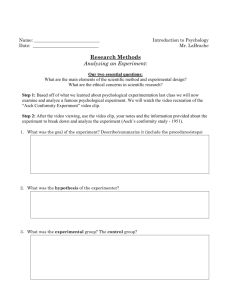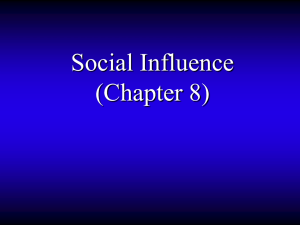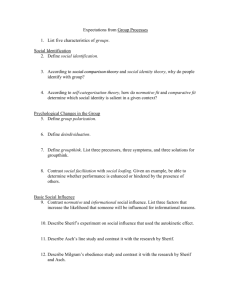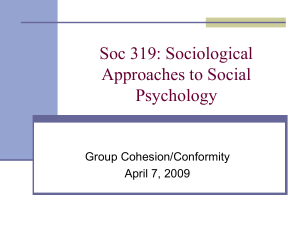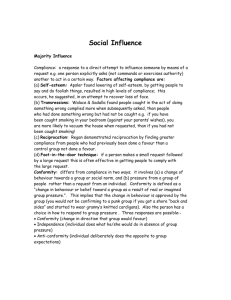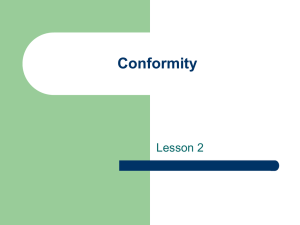Lecture 3: Social Influence The effect that people
advertisement
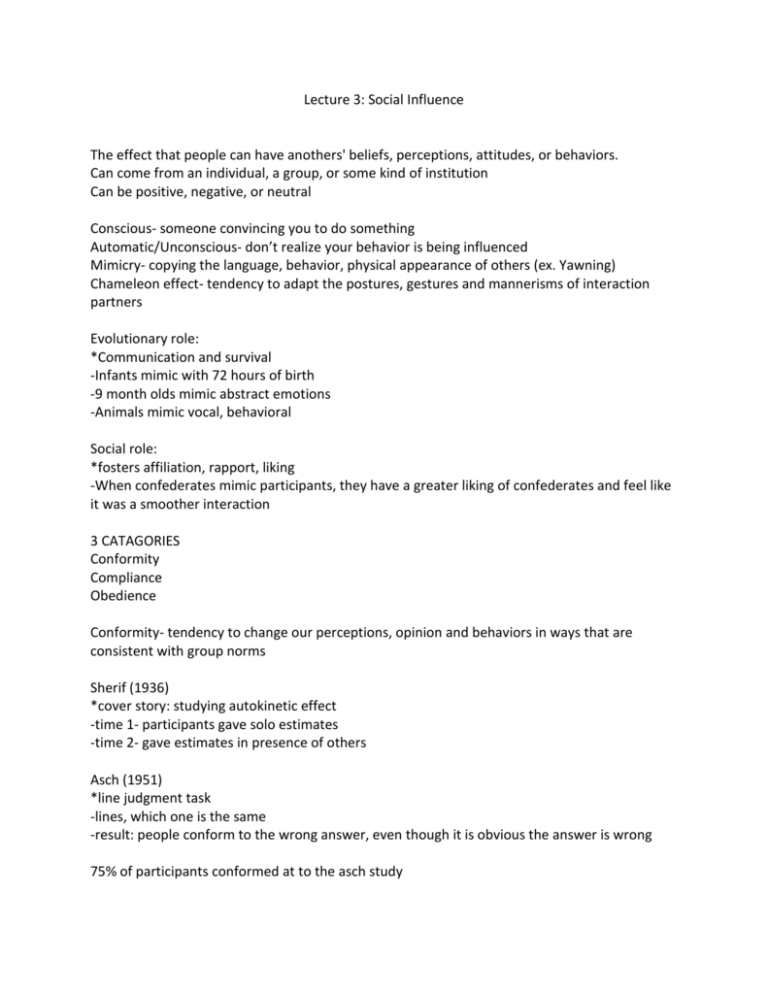
Lecture 3: Social Influence The effect that people can have anothers' beliefs, perceptions, attitudes, or behaviors. Can come from an individual, a group, or some kind of institution Can be positive, negative, or neutral Conscious- someone convincing you to do something Automatic/Unconscious- don’t realize your behavior is being influenced Mimicry- copying the language, behavior, physical appearance of others (ex. Yawning) Chameleon effect- tendency to adapt the postures, gestures and mannerisms of interaction partners Evolutionary role: *Communication and survival -Infants mimic with 72 hours of birth -9 month olds mimic abstract emotions -Animals mimic vocal, behavioral Social role: *fosters affiliation, rapport, liking -When confederates mimic participants, they have a greater liking of confederates and feel like it was a smoother interaction 3 CATAGORIES Conformity Compliance Obedience Conformity- tendency to change our perceptions, opinion and behaviors in ways that are consistent with group norms Sherif (1936) *cover story: studying autokinetic effect -time 1- participants gave solo estimates -time 2- gave estimates in presence of others Asch (1951) *line judgment task -lines, which one is the same -result: people conform to the wrong answer, even though it is obvious the answer is wrong 75% of participants conformed at to the asch study Sherif vs Asch *differences -sherif study- answer was ambiguous -asch study- answer was clear Why do we conform? Informational- we want to be correct (sherif study) Normative- we want to be liked (asch study) *Public vs Private conformity -asch was public (short term superficial change) -sherif was private Factors that influence conformity *Group size -conformity increases with group size -but only up to a point -3 or 4 *Other non-conformers -conformity dropped by 80% in asch study -reduces the normative pressure to conform *Gender difference -women are more likely to conform with masculine tasks than feminine tasks and vice versa *Cultural differences -individualist cultures -collectivist cultures (higher rate of conformity) Conformity and Littering *fliers placed on people's cars *iv- confederate picks up bag of trash; control condition (no one comes) *dv- do people litter their car fliers 37% people litter control condition 7% people litter with confederate Compliance- changes in behavior that are elicited by direct more likely to comply if: -friendship/liking -commitment/consistency -scarcity -reciprocity -social validation -authority Techniques: -foot in the door (start small; effective because self-perception theory- makes you feel like a caring giving person) -Low balling (make them agree first and then reveal hidden costs; effective because psychology of commitment) - door in the face (start with large request, get rejected, then ask reasonable request; effective because perceptual contrast- seems much more reasonable then the first request and reciprocal concessions- feel like you should say yes because you already said no before -That’s not all (some-what large request, then decrease it and add in bonus)
